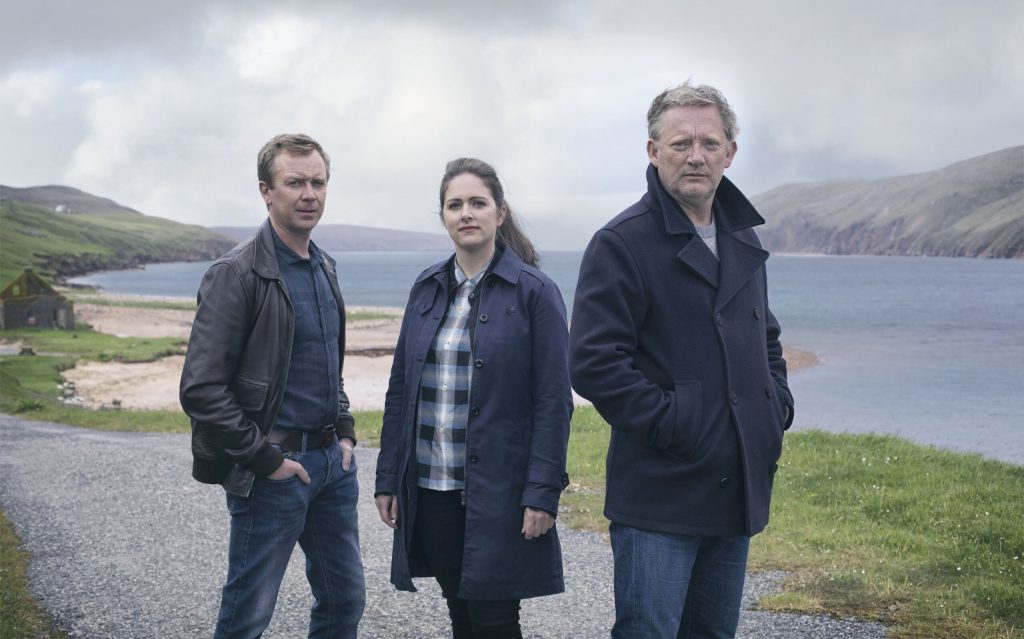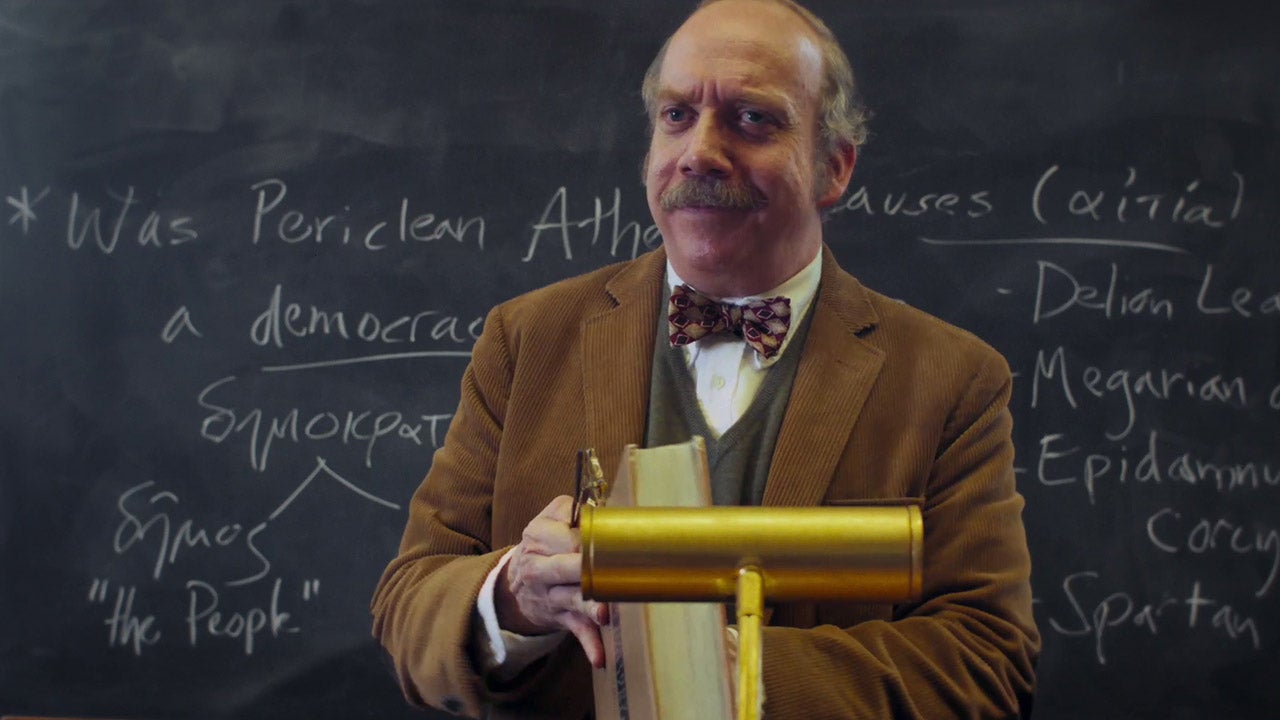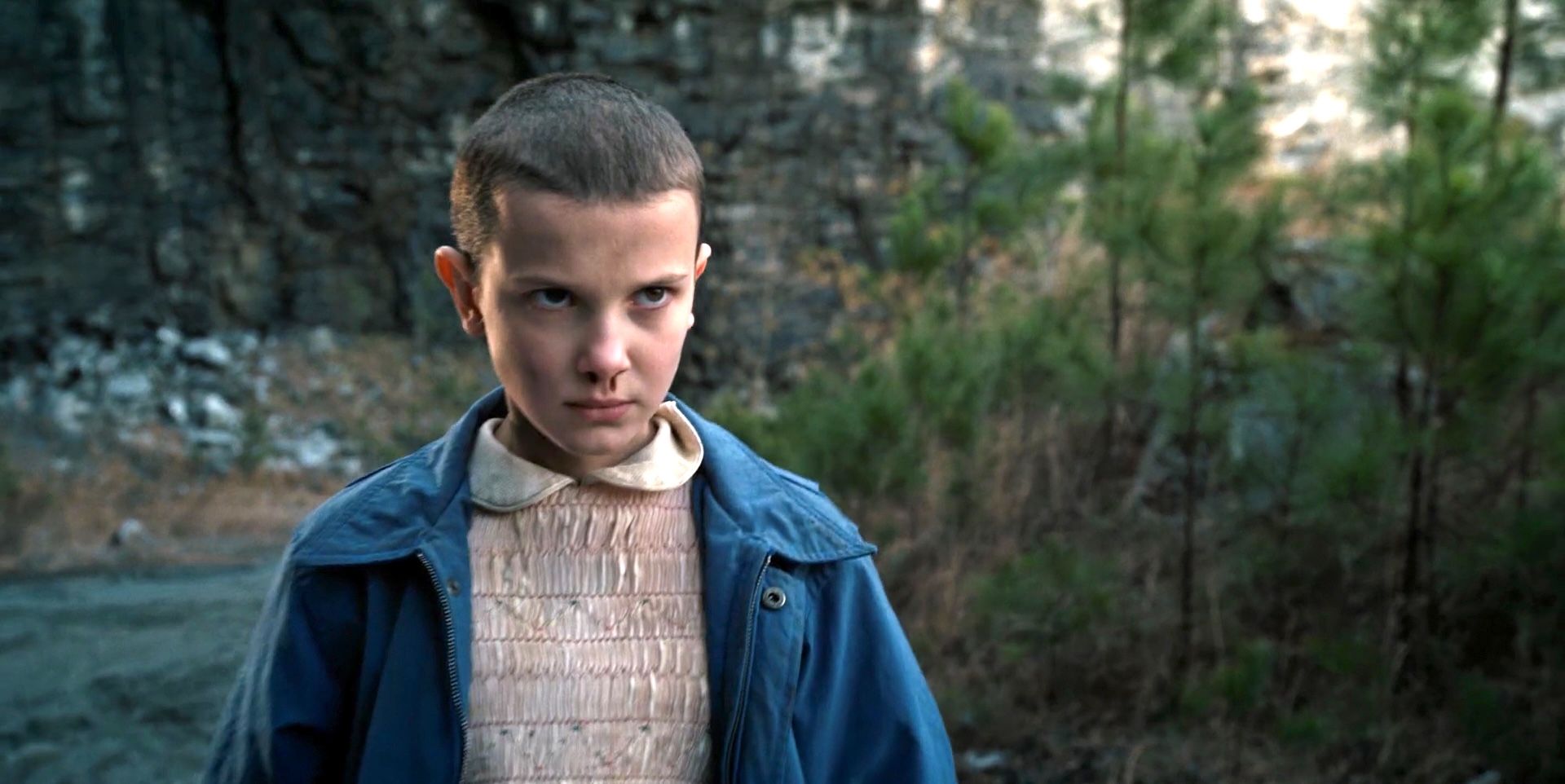- What Is Contextual Writing? (Part 1)
- What Is Contextual Writing? (Part 2)
Information Dumps
Many times the issues I see in my students’ work are a result of lack of experience obviously. They don’t trust their writing or their audience, or have the skills needed to push out content when it’s needed to be heard by an audience. Consequently, they have info dumps that create thick, stiff and unwieldy scenes.
Learning when to present information is like doing a layer cake (also a great film BTW). The series Shetland always does this well. Unfolding over 6 – 10 episodes, it can’t just dump exposition. For one thing, it would be as mentioned – stiff and unwieldy; and for another, if we’re not given the material in context, we’d forget it by the time we got to the end of the series. Also, it would reveal too much.

Main cast of Shetland. Photo by BBC
There’s a pacing to information. Anyone who’s done presentations understands this. One slide builds on the previous ones. A step-by-step informational procedure. A TED talk, for example, is similar to what we try to do with our storylines. Any movie or TV series has to keep us engaged and because we come to these procedural series for the mystery, that’s of prime importance.
In the first season of Stranger Things our knowledge about Eleven (Millie Bobby Brown) was dripped out. This kept her mysterious and formed the backbone of the storyline. We got to know her and her story in contextual pieces as needed. It was tremendously effective and kept us watching and watching and watching. We were always hungry for more. Add to this the group trying to find out what happened to Will Byers and the mysteries compound. But how best to keep that edge?
Consider this from the script where eleven first makes an appearance at a diner and the owner can see she’s hungry and also lost.
BENNY (CONT’D)
We’ll start easy. My name’s Benny. Benny Hammond.
He holds out his hand. Wraps it around her tiny hand.
BENNY (CONT’D)
Nice to meet ya. And you are…?
Still no response. Benny sighs. He starts to withdraw his
hand when he notices a SMALL TATTOO on the inside of her
lower left wrist. It reads in simple black lettering: 011.
BENNY (CONT’D)
Eleven?
The Young Girl yanks her hand away.
BENNY (CONT’D)
What’s that mean?
YOUNG GIRL
No.
BENNY
Well I’ll be damned. She speaks.
(beat, considers)
No? No what?
Still nothing.
BENNY (CONT’D)
Alright, guess “no” more food then.
Benny starts to walks with her plate when:
YOUNG GIRL
… Eleven.
Benny turns back around.
BENNY
Eleven. Yeah. What’s it mean?
The Young Girl points to herself. We’ll now know her as: YOUNG GIRL/ELEVEN.
~~~ cut ~~
INT. BENNY’S BURGERS – DINING ROOM – CONTINUOUS
Where “Eleven” is finishing off her fries. She becomes aware
of a soft, HIGH-PITCHED NOISE. Eeeee. Eeee. Eeee.
She looks up. It’s an old and rusty OSCILLATING METAL FAN. It
SQUEAKS with every turn. Eeeee. Eeee. Eeeee.
It is incessant. Annoying. Eleven narrows her eyes and —
The fan and the blades stop. Like they somehow froze.
Eleven looks away. Content now.
She continues eating her fries
At this point we’re trapped. We know her name, that she’s been tattooed, and that she potentially has powers. We have to know more – who/what she is but the Duffer Brothers won’t ever give us more than a few tidbits as the season progresses and the context of who/what she is matures and becomes vital.
And notice the pacing of the scene itself, the way that information is meted out.
1/ She’s caught eating the diner owner’s food. Obviously unhomed or worse.
2/ We see the tattoo.
3/ Her name is the same as her tattoo, apparently.
4/ She seems to be extra-powered because that fan stopped spinning.
The key is, it’s all in context to what’s happening at the moment. We never get information otherwise. Just enough to keep us guessing and keep her story building.
It’s a wonderfully written and executed series from beginning to end.
Time/ Place
Movies like Attack The Block which takes place on Guy Fawkes Day in Britain or 300 use time and place to give the stories context. Holiday films rise and fall on certain tropes. National Lampoons Vacation and Wet Hot American Summer depend on times of the year.
The recent, multi-nominated The Holdovers works in part because of the situation and the time of year when a curmudgeonly teacher (Paul Giamatti) is forced to watch students who didn’t go home for Christmas break. The time and the place (a now almost-empty prep school) both provide solid context for this film.

(Paul Hunham) Paul Giamatti in The Holdovers
Moon starring Sam Rockwell is all about place – a station on the moon.
Murdock Mysteries takes place in the late 1900’s. The reason that’s important to defining the series is that detective William Murdock, Yannick Bisson, ‘invents’ devices that were actually around that time. Headsets, remote cameras, night vision, etc. All play into the solving of a crime but more display the character’s cleverness and create a unique context for the show that couldn’t exist otherwise. The show also uses historical figures to enhance the stories like Edison, Sir Arthur Conan Doyle (Sherlock Holmes), Tesla, Florence Nightingale, etc. People who were alive at the time of that setting.
The Great Debaters would perhaps not be as powerful as it is if not for the real-life drama that played out in the 30’s when Jim Crow laws (laws that enforced racial segregation) thrived. The accomplishments of this debating team are tremendously amplified given the amazingly difficult road that African-Americans faced. That context wouldn’t be the same way today. Green Book couldn’t be the movie it was for similar reasons.
Prison movies? Imagine Cool Hand Luke, Oz, or Shawshank Redemption in a different place or setting.
Warping The World
A very small segment of films deal with alternate histories and even fewer put those alternate histories in a context we can easily relate to without a lot of backstory.
Man in the High Castle shows a world in which the Axis powers won World War II. It’s brilliant but has to do a lot of heavy lifting to get us comfortable in that world. Scifi does this a lot because many times we’re visiting other planets or realities.
The brilliant concept of Yesterday written by Richard Curtis and directed by Danny Boyle, puts us in a world where the Beatles didn’t exist. Sorta. There are two people beside the main character who know the group and their music. Point is, the main character Jack Malik, played by Himesh Patel, discovers this fact after an accident and being a musician himself, begins to release the songs as his own. For the most part the world is the same. Odd things like cigarettes not existing for some reason and Harry Potter books being unknown are thrown in but for the most part it’s our world – just without Beatles. This forms the basis of a pretty great film without measurably taking us of context.
Villains
Even antagonists demand context. In many drawing room mysteries like Poirot or Death In Paradise who is killing whom for what reason is in context. TV series like Criminal Minds have almost exactly the opposite context in that serial murders don’t have direct connections with victims in many cases.
Midsommer Murders a highly successful episodic Brit TV show, takes this at times to extremes. Count on the murderer or murderers to have been done wrong at some point in their lives. They exact revenge based on a background of what they feel is injustice. Their backgrounds are filled with villainy perpetrated on them or their loved ones. In the same way L.A.S.D. Sgt. Walker learns some truths about his suspects, we as viewers are given context for why the deeds were done.
In Conclusion
Context rules our lives whether we recognize it or not. Running around in a swimsuit at a symphony concert would probably get you tossed out. At the beach, wearing a tux or gown would get very strange looks.
Our writing in all ways reflects life.
Consider that and put it in context.

